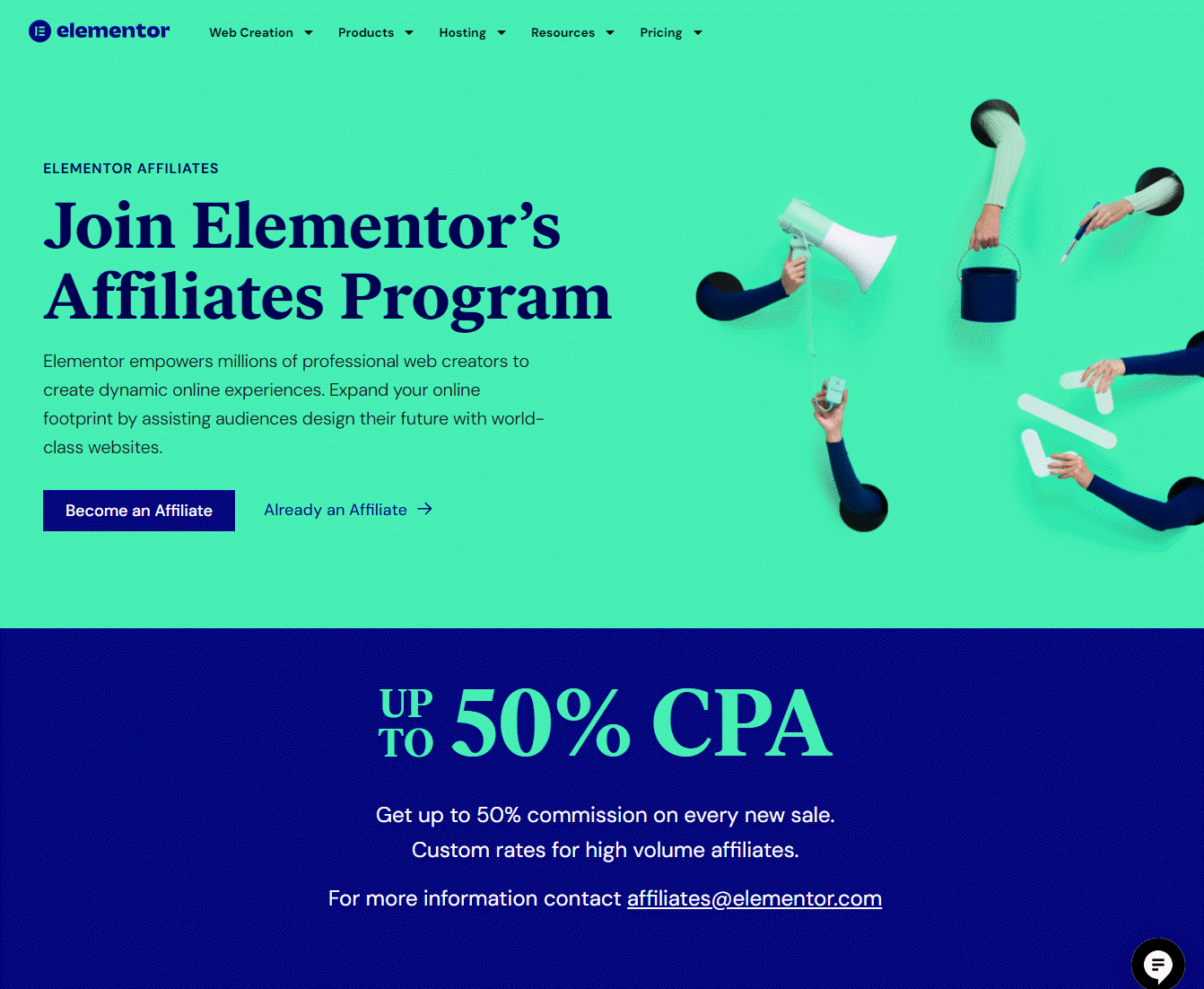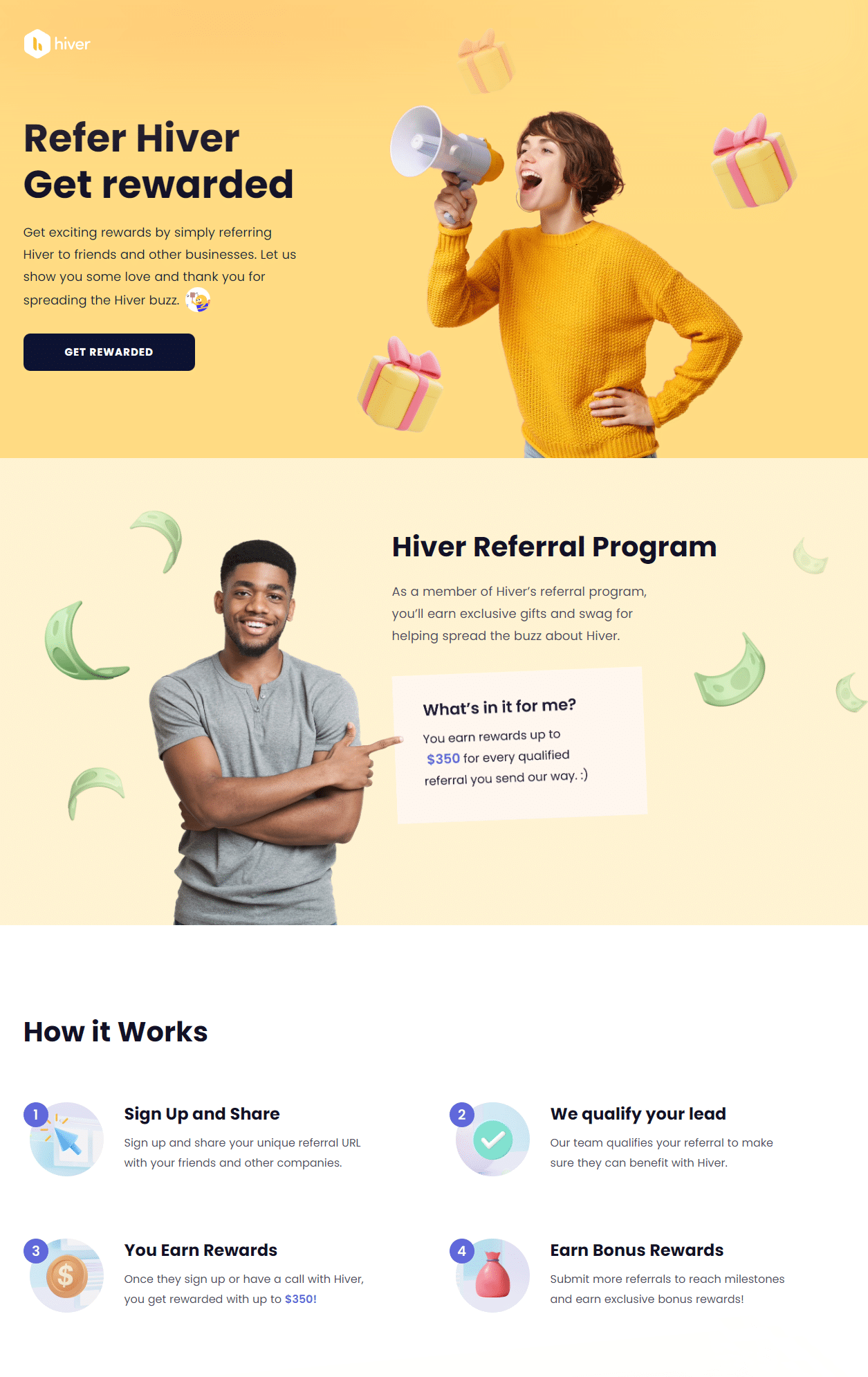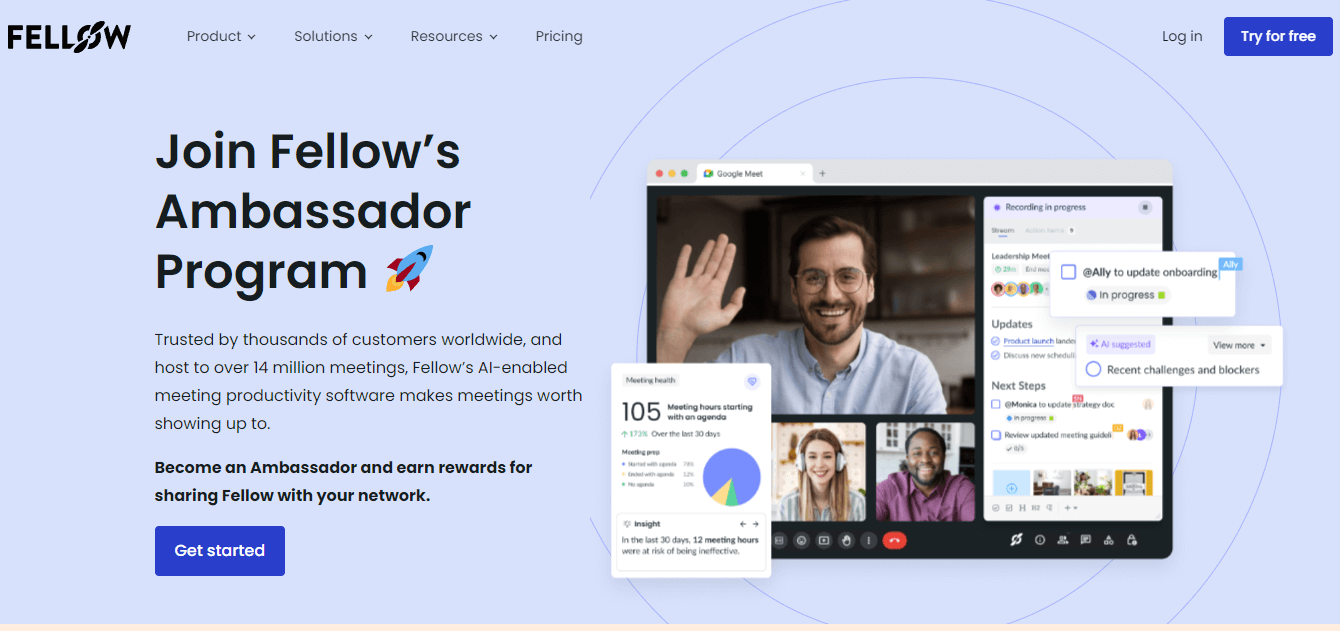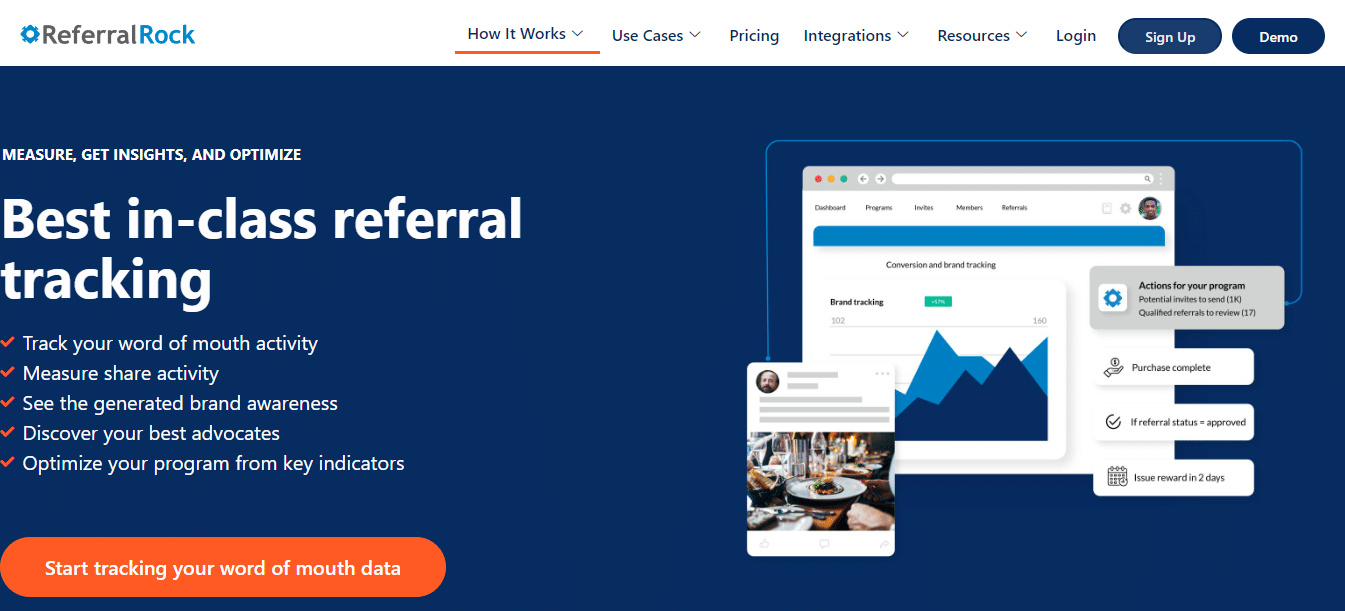Traditionally, B2B has been dealt with the short end of the stick when it comes to generating sales, leads, and converting prospects to buyers.
Because of the larger associated costs, a B2B purchase is often considered an investment in the business, and the stakes are invariably higher. Nobody wants to make a purchase and find out three months down the line that they made a mistake.
B2B buyers spend a lot of time researching options and rely heavily on the honest feedback of other users before making a purchase. This feedback, also known as ‘word of mouth’ referrals, is therefore a goldmine for marketers. As much as 91% of B2B buying decisions are made under the influence of word of mouth.
In this article we take a closer look at B2B word of mouth marketing and how it can help you grow your B2B business. We then take a deep dive into keys and strategies for B2B word of mouth marketing that you can leverage for strategic growth.
What is B2B word-of-mouth marketing?
Traditionally, B2B word-of-mouth marketing takes place when your customers who use your product or service, talk about it positively to others – whether that’s in person or online.
When it comes to the online space, word-of-mouth comes in the form of reviews, social media shares, as well as reviews from friends, associates, or other users.
At the outset, word-of-mouth can appear unpredictable, unlike traditional one-sided (company-to-customer) marketing. However, there are ways to encourage word-of-mouth recommendations (or, at the most basic level, ask for reviews and referrals) while limiting your risks. We’ll cover this in more detail later in this article.
Benefits of B2B word of mouth
So, exactly how does word of mouth marketing benefit B2B companies?
Cost-effective form of marketing — Unlike other forms of marketing, which can involve high ad spends as well as some amount of risk in terms of payoff, word-of-mouth marketing is considered relatively inexpensive. In fact, you can even set up word-of-mouth marketing with little to no spend at all. Asking for online reviews, referrals, or testimonials won’t cost your business a dime!
Generates trust and credibility — A B2B purchase typically involves a long sales cycle, during which potential customers carry out in-depth research before making purchasing decisions. Word of mouth recommendations help cement trust and credibility with the net effect of having your prospects choose you over your competitors.
Lowers the risk factor associated with the purchase — B2B purchases tend to be viewed as risky investments due to their higher costs. Positive word of mouth can make your product or service a less risky proposition overall, compared to products for which there are scant reviews.
Peer recommendations appear more credible — We know that 92% of people trust word-of-mouth referrals from people they know over all other forms of advertising. At the end of the day, decision-makers typically purchase a product because people they know or trust are satisfied clients. Companies can appear profit-driven, whereas peers who have a similar psychographic profile, are, like them, looking for the best choice.
Compounding benefits — The good news is that your word-of-mouth marketing doesn’t end with the one happy customer. You can continue to leverage word of mouth so you’re essentially compounding your marketing efforts, again with little to no spending on your part. Each customer will keep referring to the next, and so on, extending your brand’s influence to a much wider prospect pool.
Higher-quality leads and customers — Customers brought in via word-of-mouth tend to be more loyal and of a higher quality. In fact, marketers rate the quality of leads brought in by word of mouth a solid 4.28 out of 5. The reason is simple — when referred by other satisfied customers, your new clients are already coming in with positive experiences. They don’t need as much convincing, and they’re less likely to regret their choice.
Keys to B2B word-of-mouth marketing
Before taking a deep dive into effective strategies for B2B word of mouth marketing, it’s important to lay the groundwork for a solid foundation:
Deliver an outstanding product and stellar customer service
Successful word-of-mouth marketing starts with a solid product proposition. It involves going beyond simply creating a product that solves a major problem. If there are already many other players in the market, find a way to distinguish yourself from the rest, which doesn’t involve the rather simplistic solution of undercutting pricing. You may end up eating away into your margins while stretching your resources thin. Being a ‘cheaper’ product isn’t what you’re aiming to be.
Here are a few tips:
- Start with market research to gather intel into the challenges that potential customers face, what they would prefer to see in a solution, and what they love about the existing competitor offerings they’re using.
- If you already have a product, implement a process of continuous development by surveying your customers regularly to understand user feedback and overall product sentiment. Use focused surveys or NPS scores to understand user experience, their current challenges, what you’re doing well, and areas for improvement.
- Your product messaging should be clear and compelling. At the end of the day, your product or service should make your clients’ lives easier by simplifying their processes, helping them save more time, or reducing their costs.
- Flexibility, customizability, and ease-of-use are non-negotiables. They are no longer seen as the bells and whistles they once were. Ensure your product or service includes these vital elements.
Also, work towards providing stellar customer service, preferably 24/7 with fast response times. Downtimes and operational malfunctions can have major implications for a business, so being available when they need your support can be a key differentiating factor.
If your product or service and customer support are generating raving fans who want to share about you, assume you have a winner on your hands!
Set yourself apart from the pack
Having a dedicated success manager is the new normal. Your B2B clients will appreciate a steady hand and unwavering support not just in the beginning but throughout their journey with you, and yes, even at the end, if you have to part ways.
Continuously research market trends and what your competitors are doing right. Monitor your customer reviews, both online and offline. Keep surveying your customers using the methods we described earlier.
Product development is an ongoing process. Touch base with your users regularly to quickly address problems, fix sudden challenges, and improve the user experience.
Talk to your customers
The easiest way to identify what customers love about your product is to ask them directly. Start by identifying your 10 most loyal customers or your top repeat purchase customers (across 10 different businesses). Aim for diversity to collect multiple viewpoints. Set up quick ‘check-in’ calls with each customer for a time that’s mutually convenient.
Here are a few questions worth considering:
● What do the people/companies who use your product/service love about you?
● How have you helped them throughout each stage of their customer journey?
● What did they expect to happen at each stage – and did you exceed their expectations?
The idea behind this exercise is to find reasons to share – genuine aspects of the customer experience that you can incorporate into your marketing messaging.
Be purposeful
Word of mouth marketing can happen organically if your product is outstanding. But although the keys above are necessary, you shouldn’t just deliver on the keys and then leave word-of-mouth to chance.
Instead, you need a reliable way to directly encourage word of mouth. Given the strong competition in the B2B space, it’s much better to plot a well-thought-out strategy and leave nothing to chance. Focus this word-of-mouth strategy on encouraging positive sharing.
Rewards can work wonders to generate traction, but consider a multi-pronged approach for the best results. We’ll cover this in more detail in the section on strategies.
Make it measurable
Needless to say, unless you have a means to measure your outcomes against your goals, you won’t be able to understand the actual impact of your marketing efforts. Without concrete ROI numbers, it also becomes challenging to optimize the use of resources to grow your business.
Consider software that helps you run word of mouth campaigns – referral, affiliate, and/or ambassador marketing software. They usually have analytics embedded to help you get data into the insights that matter.
Other ways to measure impact include monitoring brand or product mentions, tags, and shares on social media platforms, and tracking website or marketing campaign metrics.
Proven B2B word of mouth marketing strategies
Once you’re set up with the foundational keys, you can start deploying tried-and-tested tactics for leveraging the power of word-of-mouth marketing campaigns.
Start a referral program
Start with a formal advocacy program — a B2B referral program is a good place to start. Referral programs incentivize existing customers to become brand ambassadors. They promote your business to other businesses by sharing positive lived-in experiences of your brand.
Your target audience is more receptive to feedback from peers, as opposed to ads and brand messages which can be seen as less authentic and purely profit-driven. Plus, trackable referral links provide a source of rich data, such as who referred, how much they referred, and when they referred.
Here are some pointers to keep in mind:
- Reward for both leads and sales: Set up your referral program to reward referring customers for both qualified new leads and new sales. Rewarding at both stages helps to establish a steady state of motivation. Given that B2B sales cycles are typically longer (it can take months before a sale), you want to ensure that referring customers feel encouraged to bring in more business.
- Offer cash or gift cards: In terms of rewards, based on our experience, we recommend either cash or gift cards. These are often the most well received because your referring customer can redeem them for whatever they like. Plus, the referring customer isn’t always the person paying for a B2B product, so referrers can’t always make use of subscription credits.
- Consider a tiered reward structure: In a tiered program, advocates can earn higher-value rewards the more customers they refer. This means you’re offering bigger rewards for the referring customers who deliver the most leads and sales – and creating your ‘super-advocates!’ Tiered structures can be hugely motivating as well as satisfying for super-advocates.
- Actively promote your referral program: Ensure you’re consistently promoting your program (without being too nosy or obtrusive) so your customers always have the program top-of-mind. Promote at all touchpoints, including email, newsletters, purchase notifications, social media, your website, and your customer portal.
- Consider Referral Rock’s One Click Access links: With a single click, customers can easily access their portal and share referral links instantaneously. There is no need for them to sign up or register onsite. Customers are most likely to share if the sharing process is easy and seamless.
Another word-of-mouth strategy worth considering in tandem is running an affiliate program, where partner businesses function as approved sellers in exchange for commissions.
Recruit industry influencers as your affiliates
Next, look at bringing on board B2B influencers to function as affiliates. The idea is to partner with people, including customers, who have a solid standing and following in the industry for their expertise and/or thought leadership. Look for authority and credibility.
The B2B influencer-affiliate will promote your product or service through their content. This content can take the form of reviews or mentions on their website. You could even garner mentions on their newsletters, videos, and podcasts. They will embed a trackable link directing users to your website and earn cash commissions when the customer who makes the click goes on to become a qualified lead or purchasing customer.

When determining commission rates, aim for competitiveness with an eye on your bottom line. Research what competitors are offering, survey potential affiliates to gauge sentiment, and finally factor in your customer acquisition costs, retention rate, and average customer lifetime value.
Affiliates will be glad to spread the word about you for the right commission; be sure commissions are competitive, paid in cash, and awarded for both leads and sales.
Expert Tip: Affiliate networks can seem like an attractive choice, given they have a ready platform filled to the brim with promising affiliates. However, you may end up paying more in extra costs to networks, and you won’t necessarily have as much control over data. Ultimately, you’ll also be sacrificing the ability to form solid relationships with your affiliates, which isn’t the case if you opt for affiliate software.
It’s best to choose affiliate software instead. Affiliate software helps you take control of the end-to-end management of your affiliates and build strong ties with them on your terms, at a cost that works for you.
Find your most reliable ambassadors
Reliable B2B brand ambassadors are those who organically share positive feedback about your brand on a consistent basis. They’re typically your most loyal customers and top referrers. You’ll handpick them, and you can expect such ambassadors to get on board for the long haul.
If you haven’t already started a system of collecting reviews and testimonials (more on starting one below), use this method to identify potential ambassadors. They’re the most enthusiastic about positive brand sharing.
When you’re handpicking your brand ambassadors, also consider a few other important criteria. Aside from consistent authentic sharing, look at whether they have a level of authority in their business niche, usually backed up by a strong fan following. Also, look at engagement rates. Are they generating traction in the form of enthusiasm or agreement from followers? It’s a good indication of an active audience base.
Brand ambassadors always have authority in a niche or among an audience, and experience with your product – making them especially trusted (compare this to affiliates, who have authority and believe in what you do, but haven’t necessarily used your product).
You’ll provide your ambassadors a trackable link they can share in their content. In exchange for bringing in new qualified leads and sales through link clicks, they become eligible for incentives. You have the freedom to reward your ambassadors’ sharing with gift cards and tangible incentives – not just cash – to encourage them to talk about you and bring in more leads.
Encourage UGC
UGC, or User Generated Content, is often associated with B2Cs, but it’s just as viable from a B2B perspective. At the end of the day, peer content is considered honest, authentic, and credible, compared to brand marketing, which often feels like you’re being talked down to. Try these three methods to leverage UGC for B2B word of mouth marketing:
- Motivate your customers to share what they love about you on social media in exchange for a reshare of the best comments and posts on your business page.
- Share links to customer blog posts and third-party reviews. Alternatively, provide screenshots.
- Ask customers to post video testimonials of how your product has transformed their business.
When you’re asking for reviews, the timing can be critical. It’s best to ask when customers are happiest, such as right after a purchase (especially a repeat one), after they’ve left a positive review or social comment, after a positive comment to an employee, once they’ve had an “aha” moment of success with your product, or after they’ve shared you with a friend.
You could also opt to reward customers for reviews on sites exclusively devoted to B2B product/service reviews. But ensure your factor in the site’s rules about incentives before you venture down that route. Incentivized reviews may translate to promotional content.
Become a thought leader with stellar content
While you’re partnering with thought leaders, remember to position yourself as your thought leader too. Build up an authoritative presence in your niche by creating digital content consistently in the form of blog posts, social media posts, videos, webinars or podcasts. Aim to distinguish yourself with insightful commentary that’s fresh and ahead of the curve. A track record of stellar, expert content means your name’s more likely to get brought up in conversations, as you’re respected as an authority.
In addition, cultivate relationships with referral/affiliate partners, so their content can feed into your thought leadership. Aside from benefits to the bottomline, building relationships can help widen your network and increase your level of influence and impact within the B2B space.
Fuel your word-of-mouth engine with Referral Rock
What if you could start executing consistent word-of-mouth marketing straightaway without having to hire costly expertise, crunching copious amounts of data or making countless mistakes building your own word-of-mouth engine from scratch?
Engaging and rewarding advocates is paramount to your success. Why not opt for referral software to streamline the process of running a referral, affiliate, or ambassador program?
With Referral Rock, you can:
- Send out consistent emails to promote sharing and engage advocates
- Give advocates instant links to access their referral program without needing to log in
- Set up customized rewards to best appeal to your advocates
- Create a multi-step program, where advocates can earn rewards for both leads and sales
- Create a tiered program, where advocates can earn higher-value rewards as they make more referrals
- Automatically track all the referrals your customers make, for full visibility into your ROI
- Measure the impact of all your referrals by tracking the brand awareness they generate
- Instantly issue rewards when earned, to keep advocates happy
- Access expert support from onboarding specialists, who know all the best practices for setting up a successful referral program
- Run a referral, affiliate, or ambassador program – Referral Rock’s flexible enough to run all of these programs
Don’t leave word of mouth to chance
With 91% of B2B buying decisions influenced by word-of-mouth, deploying word of mouth marketing can prove to be a gamechanger for your business. It’s a cost-effective approach that establishes trust, credibility, and lowers the perceived risk of an incorrect purchase decision for potential customers.
Implementing formal referral programs, recruiting influencers as affiliates, identifying loyal brand ambassadors, encouraging user-generated content, and establishing thought leadership through stellar content are proven tactics. However the most important keys for success are effective planning, consistency in approach, and tactical execution.
Consider using Referral Rock to streamline the end-to-end management of your referral marketing, including task and workflow automation, email marketing, advocate engagement, tracking leads and sales, automatically issuing rewards, and so much more. With expert support on hand throughout, you’ll be off to a flying start in no time at all.







